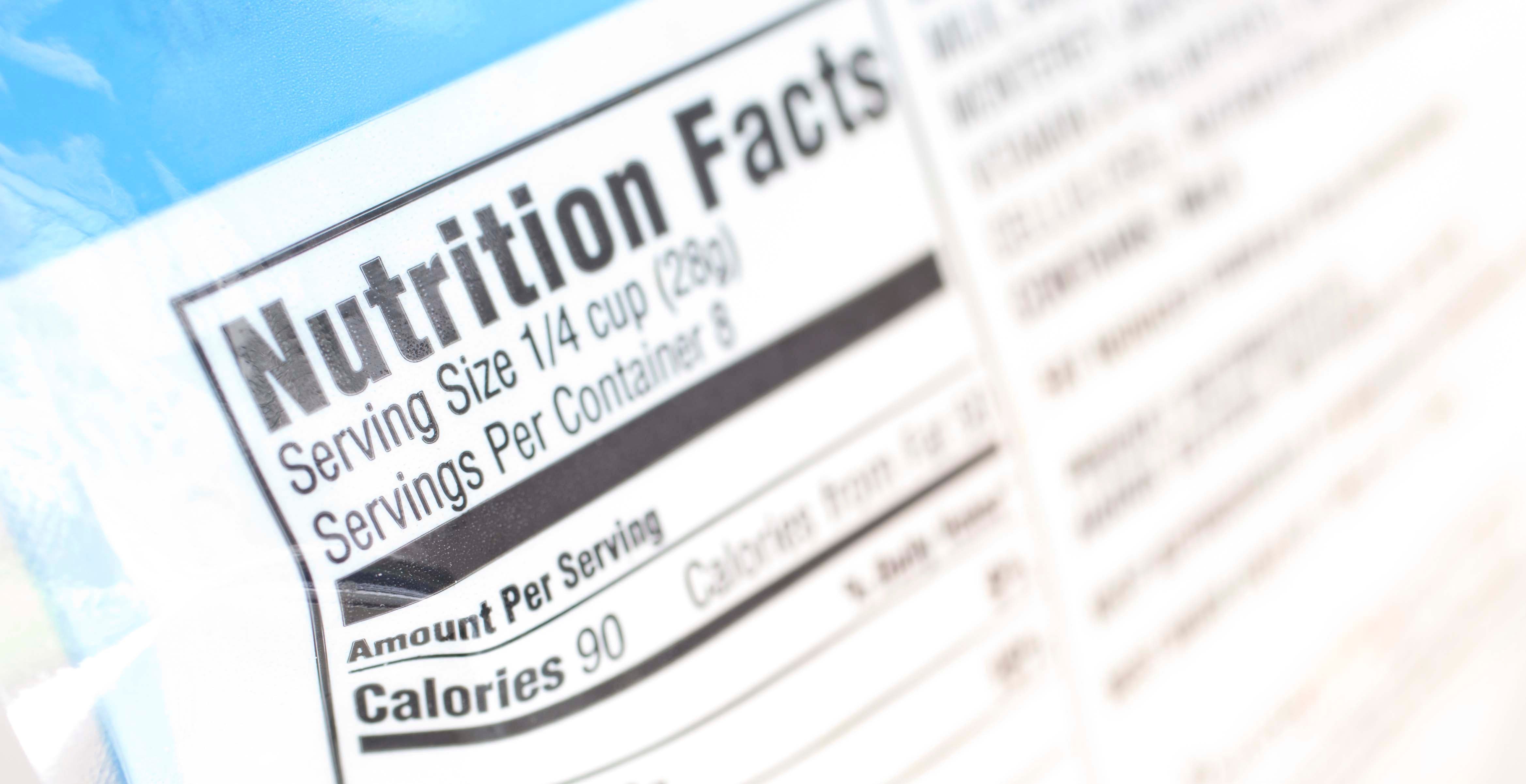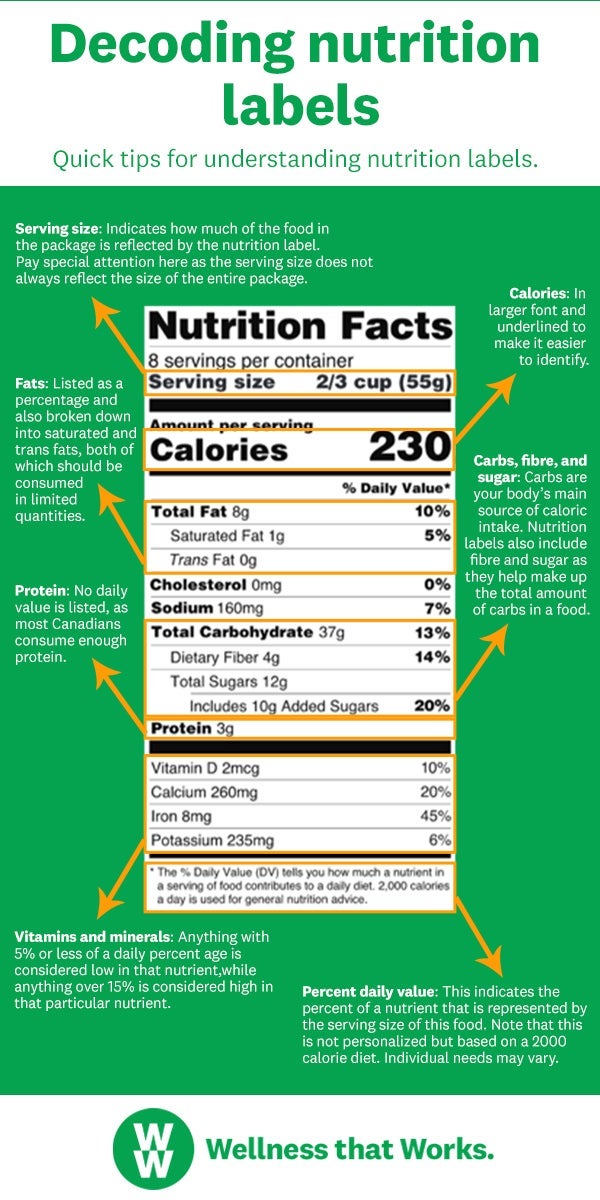Decoding Nutrition Labels



Reading nutrition labels when grocery shopping is an important part of eating for optimal health and fulfillment. Despite their integral role when developing sound eating habits, nutritional labels can be confusing and are subject to misinterpretation and confirmation bias. Decoding this information can help you make an informed decision about what to include in your eating plan and the Canadian government has recently made several changes that will make the process even simpler.
Serving size
The nutrition information on the label is based on the suggested serving size which is listed as either a metric or imperial unit of measurement by weight or volume. Although recent changes in food labelling have attempted to increase serving sizes to better reflect actual Canadian diets, underestimating serving sizes is a common pitfall when trying to follow nutrition labels. If possible, use a food scale when measuring out serving sizes in order to obtain greatest accuracy.
Percentage of daily value
On the right-hand side of the chart you’ll notice that most of the categories listed are accompanied by a numeric percentage indicating that food’s contribution to your daily requirements. These percentages are currently being updated as part of an initiative by the Canadian government to ensure food labelling is based on current nutritional science requirements. Anything with 5% or less of a daily percentage is considered low in that nutrient, while anything over 15% is considered high in that particular nutrient.
Calories
New changes to food labelling in Canada requirethat the word “calories” is now printed in a larger font and is underlined, making it easier to quickly identify the caloric content of food. Calories reflect the contents of a single serving of food and must be adjusted according to how many serving sizes are actually eaten. Individual caloric needs will depend on your level of movement during the day, the more sedentary your lifestyle the less calories needed to give you energy throughout the day and vice versa.
Fats
Fats are listed as an entirety with a percentage of daily value before being broken down into saturated fats and trans fat. Food manufacturers are not required to list polyunsaturated and monounsaturated fats separately. Despite their absence on the list, polyunsaturated and monounsaturated fats are an essential part of a healthy diet and you should aim to eat two to three tablespoons each day. These types of fats can be found in avocados, nuts, seeds, and fatty fish.
Carbohydrates, fibre, and sugars
Carbohydrates are the body’s main source of caloric intake, and nutrition labels in Canada include fibre as well as sugar. Complex carbohydrates such as whole grains, beans, fruit, and vegetables offer higher amounts of fibre which is good for digestion and keeping your body feeling full for longer.. Individuals with high blood sugar and/or diabetes will be happy to see sugar levels gradually being added to nutrition labels across the country.
Protein
Protein is listed on food labels without an accompanying daily intake percentage because most Canadians consume enough protein through their regular diet that they don’t need to seek out high-protein items intentionally.
Cholesterol
Food manufacturers have the option of including cholesterol on nutrition labels as there is little evidence that high cholesterol levels are due to diet. Instead, dieticians recommend eating a diet low in saturated fat, living an active lifestyle and regular bloodwork in order to combat cholesterol.
Vitamins and minerals
The final section of a nutrition label lists vitamins and minerals such as iron, zinc, vitamin B12 and 6, vitamin D, and vitamin E. The Canadian government recently added potassium to this list because it has been found to be lacking in the average diet and plays a key role in maintaining healthy blood pressure. Vitamins A and C have been removed from the list as these nutrients are accessible to most Canadians and the average diet fulfils these requirements easily.
